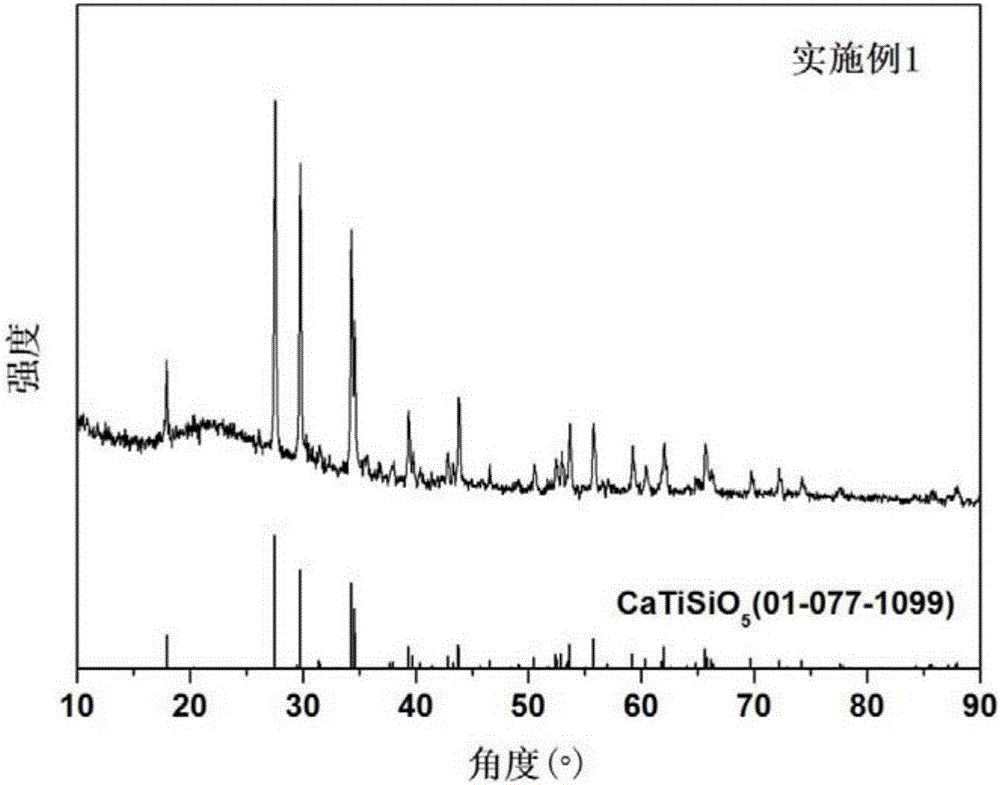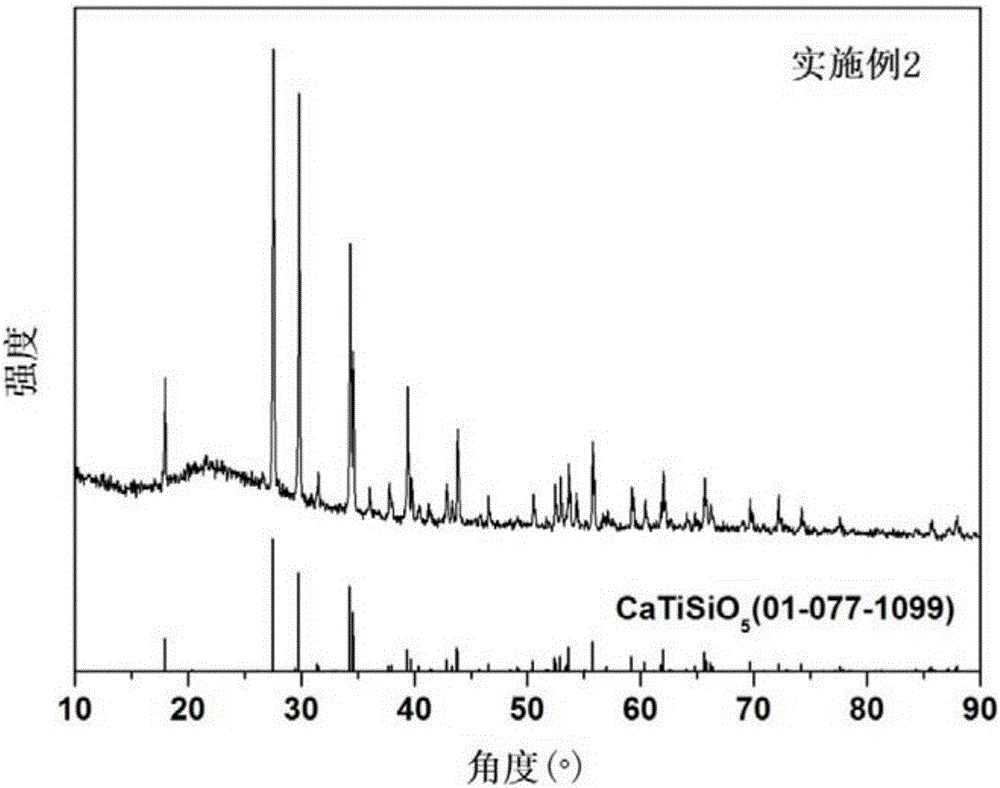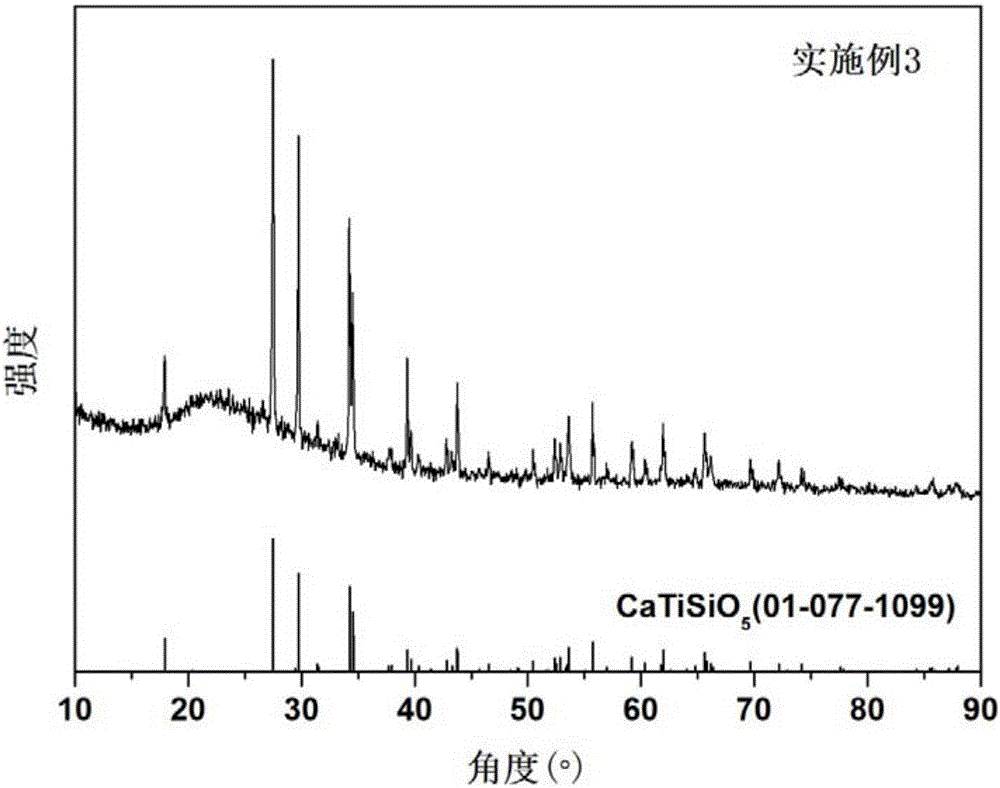Preparation method of reflective heat-insulation ceramic glazed tiles
A ceramic glaze and face brick technology, which is applied in the field of architectural ceramics, can solve the problems of unfavorable industrialization, large power consumption, and large consumption, and achieve the effect of large power consumption, large consumption, and small grinding workload
- Summary
- Abstract
- Description
- Claims
- Application Information
AI Technical Summary
Problems solved by technology
Method used
Image
Examples
Embodiment 1
[0043] A preparation method of a reflective and heat-insulating ceramic glazed tile, comprising the following steps:
[0044] 1) Fully mix 26 parts of quartz, 20 parts of feldspar, 6 parts of calcite, 42 parts of titanium dioxide, 4 parts of dolomite, 1.5 parts of alumina and 0.5 parts of zinc oxide, and smelt in a frit furnace until all the raw materials are melted. The production temperature is 1600 ° C, and it is smelted into a frit; in terms of mass percentage, the chemical composition of the frit obtained after smelting is: 40wt% SiO 2 , 6wt% Al 2 O 3 , 2wt%Na 2 O, 0.5 wt% K 2 O, 5wt% CaO, 1wt% MgO, 0.5wt% ZnO, 45wt% TiO 2 .
[0045] 2) In parts by mass, mix 10 parts of the frit obtained in step 1) with 8 parts of clay, 5 parts of kaolin, 35 parts of quartz, 15 parts of feldspar, 15 parts of calcite, 7 parts of titanium dioxide and 5 parts of talc Grinding to obtain glaze slurry.
[0046] 3) The glaze slurry obtained in step 2) is applied on the green brick body th...
Embodiment 2
[0051] A preparation method of a reflective and heat-insulating ceramic glazed tile, comprising the following steps:
[0052] 1) In parts by mass, 30 parts of quartz, 25 parts of feldspar, 10.5 parts of calcite, 27 parts of titanium dioxide, 3 parts of talc, 1.5 parts of alumina, 1 part of zinc oxide, 1 part of barium carbonate and 1 part of apatite The stone is fully mixed and smelted into a frit in a frit furnace, and the melting temperature is 1550 ° C; in terms of mass percentage, the chemical composition of the frit is: 50wt% SiO 2 , 7wt% Al 2 O 3 , 3wt%Na 2 O, 7wt% CaO, 1wt% MgO, 1wt% ZnO, 0.5wt% BaO, 0.5wt% P 2 O 5 , 30wt%TiO 2 .
[0053] 2) Mix and grind 30 parts of the frit obtained in step 1) with 7 parts of clay, 25 parts of quartz, 15 parts of feldspar, 15 parts of wollastonite, 5 parts of titanium dioxide and 3 parts of dolomite to prepare a glaze slurry.
[0054] 3) The glaze slurry obtained in step 2) is applied on the green brick body through a glaze spr...
Embodiment 3
[0059] A preparation method of a reflective and heat-insulating ceramic glazed tile, comprising the following steps:
[0060] 1) Thoroughly mix 23 parts of quartz, 25 parts of feldspar, 12 parts of ground calcium carbonate, 18 parts of titanium dioxide, 9 parts of alumina, 11 parts of talc and 2 parts of strontium carbonate, and melt them into a frit in a frit furnace , the melting temperature is 1550 ℃; in terms of mass percentage, the chemical composition of the frit is: 49wt% SiO 2 , 15wt% Al 2 O 3 , 3wt%K 2 O, 8wt% CaO, 4wt% MgO, 1wt% SrO, 20wt% TiO 2 .
[0061] 2) Mix 50 parts of the frit obtained in step 1) with 8 parts of clay, 13 parts of quartz, 10 parts of feldspar, 10 parts of calcite, 5 parts of talc, 2 parts of strontium carbonate, 1 part of titanium dioxide, 1 part of spodumene Mix and grind to obtain glaze slurry.
[0062] 3) The glaze slurry obtained in step 2) is applied on the green brick body through a glaze sprayer.
[0063] 4) After drying the body ...
PUM
 Login to View More
Login to View More Abstract
Description
Claims
Application Information
 Login to View More
Login to View More - R&D
- Intellectual Property
- Life Sciences
- Materials
- Tech Scout
- Unparalleled Data Quality
- Higher Quality Content
- 60% Fewer Hallucinations
Browse by: Latest US Patents, China's latest patents, Technical Efficacy Thesaurus, Application Domain, Technology Topic, Popular Technical Reports.
© 2025 PatSnap. All rights reserved.Legal|Privacy policy|Modern Slavery Act Transparency Statement|Sitemap|About US| Contact US: help@patsnap.com



